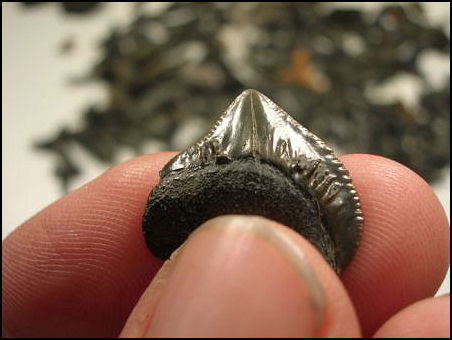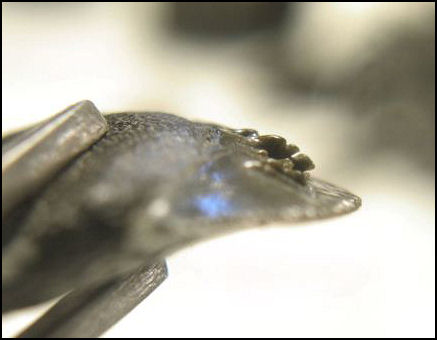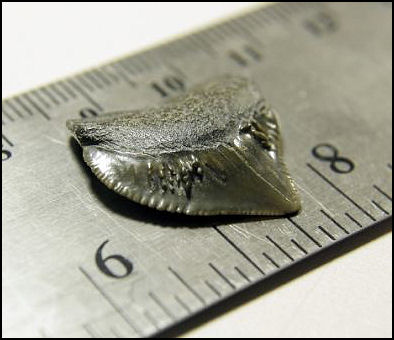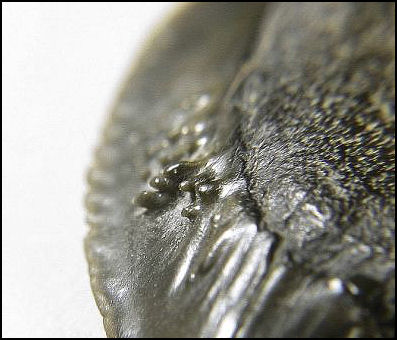Jan 14th 2010
I wanted to take full advantage of the break in the recent cold wave and
got out early. I spent the better part of the morning trying a spot that
looked like it had real potential and just got completely skunked. Not
to be deterred, I moved on and one of my first finds was this
pathological Squalicorax pristodontus.
I was rather perplexed by what appeared to be serrations on the lingual
side of the tooth and
sent some pictures off to a friend of mine. I received this most
plausible answer almost immediately:
"One of the explanations is that when this tooth was growing it has been
squashed between the youngest tooth and a tooth just a bit older. In the
beginning when these teeth grow the first thing that grows is the crown
and not the root. This will keep on growing as the tooth ages. The
enamel of the crown is still “soft” because the tooth keeps forming till
it is in the first row and falls out. The underneath lying tooth has
been in a position that it’s serrations have scratched the enamel of
this tooth and formed these marks."

Squalicorax pristodontus
Unlike the majority of pathological teeth, the deformity on this
tooth
is not the result of feeding damage, but more likely incurred as one
tooth
scratched the other in the process of development.
The rest of my finds for the day are blurred in the background.

When viewed on profile the tooth has the appearance
of having serrations on the lingual surface of the crown.

The tooth measures 7/8's of an inch on the diagonal.
Monmouth County, NJ
 |
| A close up of what I
call the "serrations". |
 |
A special thanks to my friend Patrick Hendricks for the explanation.
http://www.patricksharkteeth.com/ |



